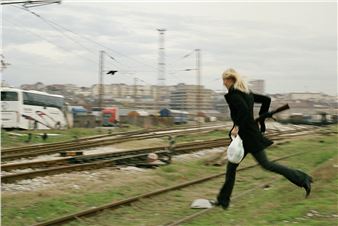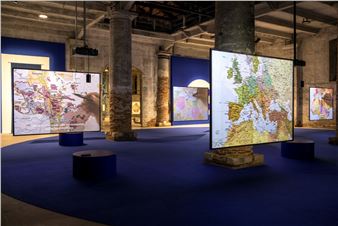The Working Life
Representations of labour have a long tradition in art; anxiety, fear, and terror equally so. In the years since the 2008 global financial crisis, many artists have showed a renewed interest in examining the relationship between personal calamities and social catastrophes, employing different forms of therapy as tools for reframing perceptions of ourselves and our surroundings. As philosopher and sociologist Maurizio Lazzarato writes in The Making of the Indebted Man (2012): ŌĆ£From one financial crisis to the next, we have now entered a period of permanent crisis, which we shall call ŌĆścatastrophe.ŌĆÖŌĆØ
Foregrounding film, video, and performance, The Working Life borrows its title from a piece by Copenhagen-based artist collective Superflex, and features works made post-global financial crisis by eight Australian and international artists. The exhibition addresses a broad affective and political spectrum, providing space both for hands-on audience engagement, such as in MelbourneŌĆōbased Stuart RingholtŌĆÖs Anger Workshops (2008ŌĆōongoing), and time for contemplation and introspection, as in New York and Los AngelesŌĆōbased Andrea FraserŌĆÖs self-scrutinising Projection (2008). Artists in the show explore a world in perpetual upheaval, and, in the case of SuperflexŌĆÖs hypnotherapy video The Working Life (2013), ways of leaving it all behind.
Artworks in The Working Life use, mimic, or subvert therapeutic methodologies to analyse how individual psyches relate to modern working conditions. With humour and self-awareness, the artists treat themselves, their subjectsŌĆöhuman or anthropomorphisedŌĆöand their audiences as patients, not to heal heartaches but to expose hypocrisy and invoke reflexivity. It would be an overstatement to suggest that the works in this exhibition could solve the problems that they externalise. However, as Andrea Fraser articulates in her essay ThereŌĆÖs No Place Like Home (Whitney Biennial catalogue 2012), if we took note of fraud, hypocrisy, injustice, and our own anger, we would open the door to further discussion and perhaps someday, to change.
Featuring works by Richard Bell, Andrea Fraser, Marianne Flotron, Melanie Gilligan, Jesse Jones, Darius Mik┼Īys, Stuart Ringholt, and Superflex.
Curated by: Aileen Burns and Johan Lundh.

Recommended for you
Representations of labour have a long tradition in art; anxiety, fear, and terror equally so. In the years since the 2008 global financial crisis, many artists have showed a renewed interest in examining the relationship between personal calamities and social catastrophes, employing different forms of therapy as tools for reframing perceptions of ourselves and our surroundings. As philosopher and sociologist Maurizio Lazzarato writes in The Making of the Indebted Man (2012): ŌĆ£From one financial crisis to the next, we have now entered a period of permanent crisis, which we shall call ŌĆścatastrophe.ŌĆÖŌĆØ
Foregrounding film, video, and performance, The Working Life borrows its title from a piece by Copenhagen-based artist collective Superflex, and features works made post-global financial crisis by eight Australian and international artists. The exhibition addresses a broad affective and political spectrum, providing space both for hands-on audience engagement, such as in MelbourneŌĆōbased Stuart RingholtŌĆÖs Anger Workshops (2008ŌĆōongoing), and time for contemplation and introspection, as in New York and Los AngelesŌĆōbased Andrea FraserŌĆÖs self-scrutinising Projection (2008). Artists in the show explore a world in perpetual upheaval, and, in the case of SuperflexŌĆÖs hypnotherapy video The Working Life (2013), ways of leaving it all behind.
Artworks in The Working Life use, mimic, or subvert therapeutic methodologies to analyse how individual psyches relate to modern working conditions. With humour and self-awareness, the artists treat themselves, their subjectsŌĆöhuman or anthropomorphisedŌĆöand their audiences as patients, not to heal heartaches but to expose hypocrisy and invoke reflexivity. It would be an overstatement to suggest that the works in this exhibition could solve the problems that they externalise. However, as Andrea Fraser articulates in her essay ThereŌĆÖs No Place Like Home (Whitney Biennial catalogue 2012), if we took note of fraud, hypocrisy, injustice, and our own anger, we would open the door to further discussion and perhaps someday, to change.
Featuring works by Richard Bell, Andrea Fraser, Marianne Flotron, Melanie Gilligan, Jesse Jones, Darius Mik┼Īys, Stuart Ringholt, and Superflex.
Curated by: Aileen Burns and Johan Lundh.
Contact details















